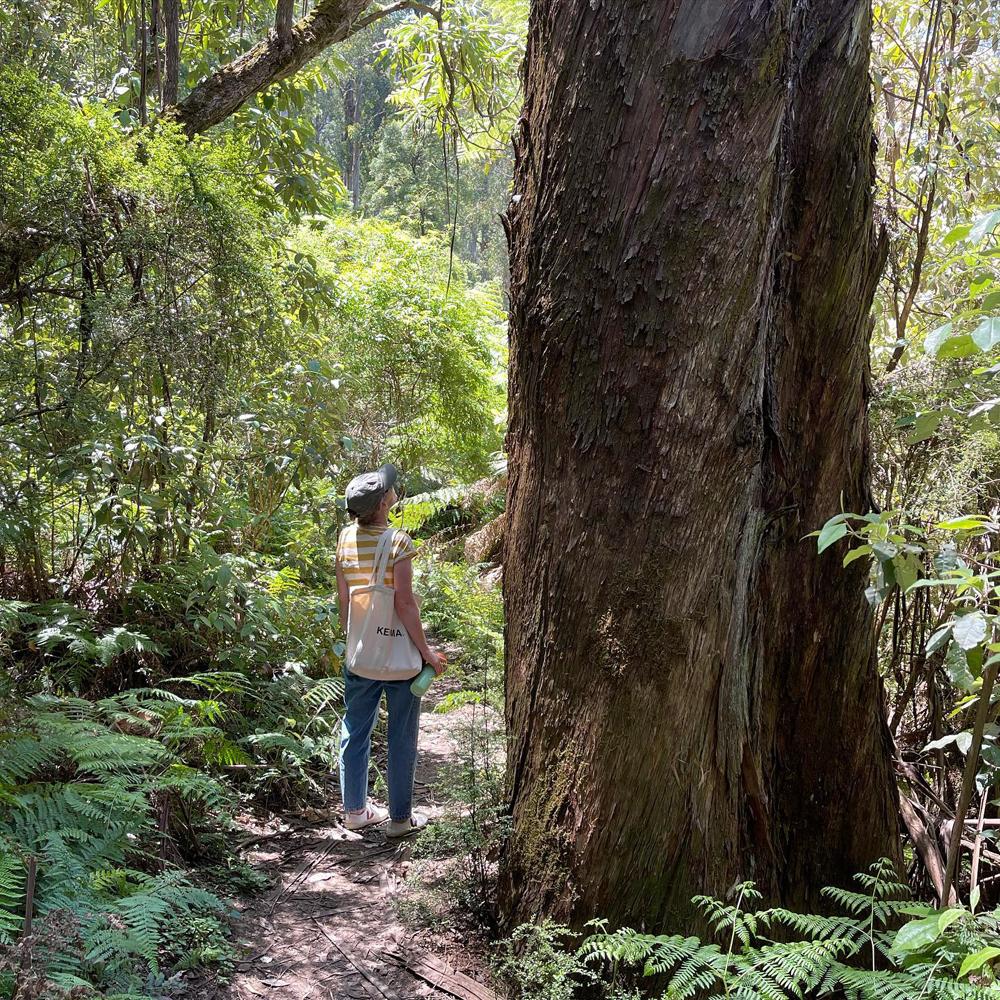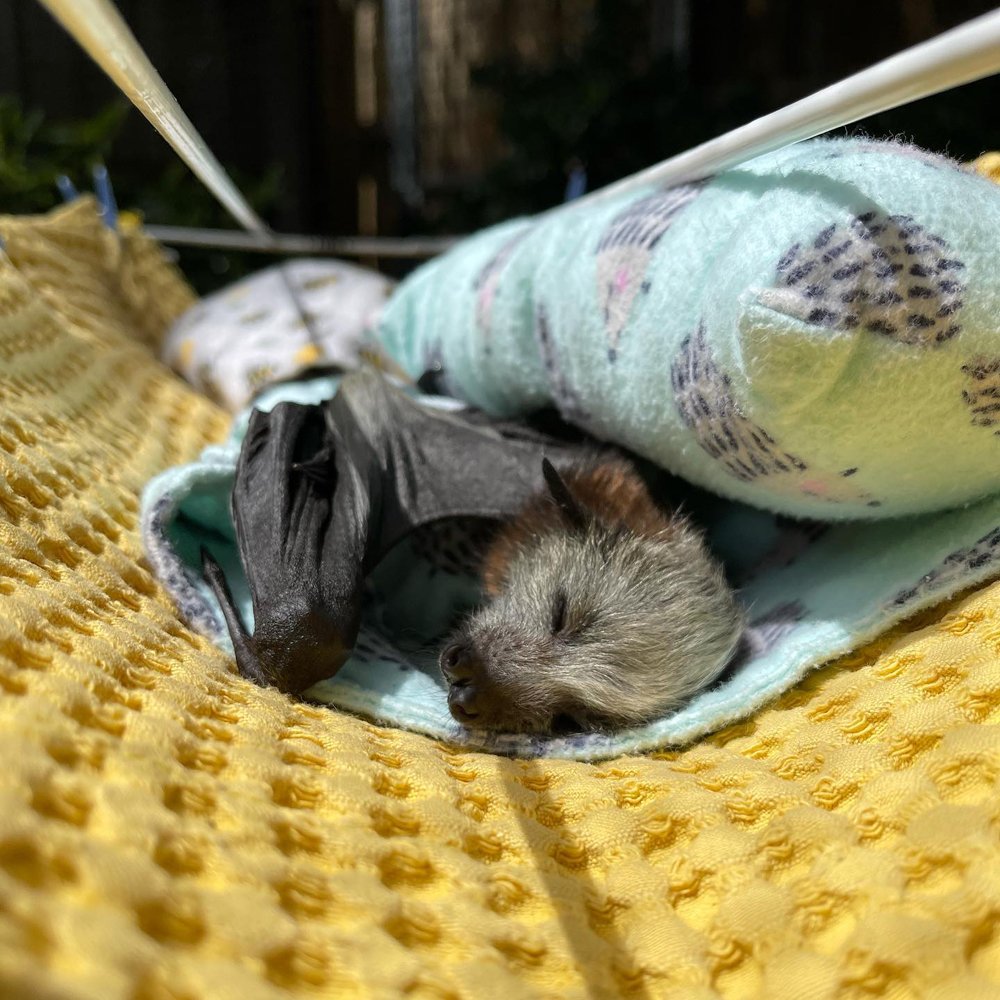From memory

A store of things remembered, and to remember
Creating a Memory Game, especially for Mornington Peninsula Regional Gallery, comprised of our artwork from three separate artists’ books, Because I Like You (2016), Prattle, scoop, trembling: a flutter of Australian birds (2016), and A Flight of Twelve Southern Hemisphere Birds (2013), was a joyful puzzle during a locked-down year. Upon the 36 cards that test the visual memory, you will find a cast of 38 beaks and muzzles. From Red-backed fairy-wrens to Sea otters, some will be more familiar and closer to home than others, and, as with all our work, we hope it encourages you to be awe-inspired by the interconnectedness of the world.
You can purchase Memory Game through the MPRG online store and when visiting the gallery shop.
For the keen nature buff, from the pages of Because I Like You you can see a
Greater bilby (Macrotis lagotis)
An endangered burrowing marsupial, with long pinkish ears, the Greater bilby gallops much like a rocking horse.
Black-and-gold howler monkey (Alouatta caraya)
Who greets the dawn with a guttural howl.
Rufous mouse lemur (Microcebus rufus)
Shy and nocturnal, hiding in the foliage from the Fossa, the Ring-tailed mongoose, and the Madagascar harrier hawk.
Polar bear (Ursus maritimus)
With whom we share a plantigrade gait.
Californian sea lion (Zalophus californianus)
With short black stubble on your flippers.
Greater stick-nest rat (Leporillus conditor)
Can weave a secure nest from branches and collected vegetation.
Eurasian red squirrel (Sciurus vulgaris)
The forgotten seed caches they bury sometimes sprout and grow into trees.
Sea otter (Enhydra lutris)
The loose patch of skin under their forearms serves as a pocket for rocks and other tools.
From the pages of Prattle, scoop, trembling: a flutter of Australian birds you can see a
Red-backed fairy-wren (Malurus melanocephalus)
The smallest of Australia’s fairy-wrens, they forage, like a charm, in pairs and family groups.
Australian magpie (Cracticus tibicen)
With their chestnut brown eyes fixed on trinkets in the distance or an insect and their larvae.
Brown honeyeater (Lichmera indistincta)
Though often to be found in mixed flocks with other honeyeaters, the Brown honeyeater will often be easily displaced at feeding sights by larger birds.
Australian king-parrot (Alisterus scapularis)
Known for its blaze of brilliant red, when viewed under ultraviolet light, some feathers even appear to glow yellow.
Rainbow lorikeet (Trichoglossus moluccanus)
A fast moving blur of unmistakable colour: blue and mauve (head and belly), green (wings, tail and back), orange and yellow (breast).
Little penguin (Eudyptula minor)
Streamlined for a life at sea, they use their tails for guidance and can travel up to 20kms a day when foraging for fish and cephalopods.
Australian ringneck (Barnardius zonarius)
There may be four separate subspecies of this large green parrot, but one thing they all share is a fantastical yellow hind collar.
Painted buttonquail (Turnix varius)
By spinning about on alternate legs to reveal seeds and insects among the leaves and on the soil surface, look for the bare platelets of Painted buttonquail in order to find them.
Rose-crowned fruit dove (Ptilinopus regina)
Capable of swallowing fruit whole, they have a weakness for figs, and drink water from the hollows of leaves or from dew.
Cockatiel (Nymphicus hollandicus)
With a circle of orange upon their cheeks, they roost in trees near to a water source.
Magnificent riflebird (Ptiloris magnificus)
Side to side, back and forth, up and down, the wooing dance of the male to a female is conducted on a display perch.
Greater painted-snipe (Rostratula benghalensis)
Using their long bill to probe the soft mud for freshwater snails and worms, from dusk to early morning, the females are recognisable by their chestnut-coloured heads.
Laughing kookaburra (Dacelo novaeguineae)
Where there is a suitable tree, there is often a Laughing kookaburra, distinguishable from the Blue-winged by their brown eye stripe.
Brown cuckoo-dove (Macropygia amboinensis)
A pigeon of the rainforest, their long graduated tail enables them to balance as they hang upside down to reach fruit, high up in the canopy.
Noisy pitta (Pitta versicolor)
Unlikely to be mistaken for another species, owing to its unique plumage (from chestnut crown to red undertail), the broken snail shells of their earlier feasts form middens over the years.
Diamond dove (Geopelia cuneata)
The smallest of the Australian doves, if disturbed, while feeding on the ground, it can raise its tail to run quickly.
Grey shrikethrush (Colluricincla harmonica)
Their exquisite melodious song, to our ears, tells a different tale to nearby birds; Grey shriketrush are notorious predators at nests.
Wedge-tailed eagle (Aquila audax)
A majestic raptor, distinguishable by the wedge-shape of their tail as they soar overhead, they can lift half their body weight.
And finally, from the pages of A Flight of Twelve Southern Hemisphere Birds you can see a
Yellow-billed kingfisher (Syma torotoro)
A medium sized bird with a wingspan equal to that of a 30cm ruler, drawn here surrounded by a ring of termites. It is in the abandoned chambers created by arboreal termites that the Kingfisher makes its nest, laying between 3 to 4 eggs.
Red-rumped parrot (Psephotus haematonotus)
Known to forage so quietly on the ground among short grass where they take seeds that you may often miss them.
Crested jay (Platylophus galericulatus)
Known for its agility and as an Omen bird (commonly called Bejampong or Rain Bird) capable of foretelling how your crops will fare.
Yellow-fronted woodpecker (Melanerpes flavifrons)
Drums upon the trees, and uses a stone for an anvil to pummel large food items.
Southern boobook (Ninox novaeseelandiae)
Gives a double hoot call — ‘More-pork’ — in a pitch akin to a doves, and from which one of their common names, Morepork, is derived.
Grey-rumped treeswift (Hemiprocne longipennis)
With a tail like a pair of long-bladed scissors, pictured here with a halo of butterflies (Rajah Brooke’s Birdwing (Trogonoptera brookiana), Common Lascar (Pantoporia hordonia hordonia), The Wizard (Rhinopalpa polynice), Wavy Maplet (Chersonesia rahria), Horsfield’s Baron (Tanaecia iapis).
Kakapo (Strigops habroptilus)
Marvellously robust, flightless bird, with a subsonic mating boom, and giant claws like tree roots.
Red knot (Calidris canutus)
Beholden to the mudflats, sandflats, estuaries, bays and inlets, lagoon and harbours, where they dine upon gastropods, crustaceans, echinoderms, worms, and bivalves too.
Superb fruit-dove (Ptilinopus superbus)
A rightly purple crowned seed dispenser. Their plumage as bright as the blackberries, lilly-pillies, pittosporums, and figs they favour.
Rufous hornero (Furnarius rufus)
The Rufous hornero builds distinctive oven-like nests, which are clearly visible in trees, and atop telephone and electricity poles. Fashioned from mud and manure, within these nests there are two chambers, one serving as the actual nest and the other as a decoy to bamboozle predators.
Antarctic tern (Sterna vittata)
In the breeding season, the bills of this seabird are a bright red which later fade to a dark red in the non-breeding season.
Shaft-tailed whydah (Vidua regia)
The male is easy to spot with a tail twice his body length and grown for breeding season alone. And it is with their tails that they perform ‘competitive songflights’ in order to woo, after which the tails are shed.
Rounding out the year, at The Memo, in Healesville, you can see our zine Something reverberated and a print, When I reached the middle, and fell in step with the forest, it felt to have no end (2021), plucked from its pages framed and upon the wall, as part of a group exhibition, Wonder Walk.
The exhibition, curated by Cora Zon, is on until Sunday the 30th of January, 2022. Visit the gallery, and take a walk. Badger Weir is but an iridescent frond away, and daily walks are a pattern we hope to keep.
Wonder Walk
The Memo
235 Maroondah Highway, Healesville
And please meet Scout and Alice; Miss Ruby, a RSPCA Wangaratta adoptee; and a Siamese cat named Hugo, drawn (with love) recently for RSPCA Victoria’s annual Poorly Drawn Pets Christmas edition, 2021 fundraiser.
This time next year, Remy, Pip and Pearlie will be flying in the night sky in search of fruit, blossom, and nectar. This is a happy thought. The three of them, in the wild, together with the others also released from care.
In doing this care, it feels like there will be more good things in the world. And this is a very nice feeling.
In the meantime, they continue to delight us, and they will be with us until the bright new year is warmed.
Remy and Pip are almost ‘first-flight’ ready! Play on, friends.
As ever, please contact Bev Brown of Bat Rescue Bayside if you find an injured bat.
Please note: you need to be a qualified, vaccinated carer to handle bats.
Image credit: MPRG Memory Game: artwork by Gracia Haby & Louise Jennison. Because I Like You is based on the concept of a love letter to ten mammals, told through woodblock, collage, and the written word. From the canopy overhead, Prattle, scoop, trembling, created especially for and exhibited as part of Mornington Peninsula Regional Gallery’s Birds: Flight paths in Australian Art (2016–17), is a catalogue of Australian birds in environments both domestically ill-suited and wild. Finally, in A Flight of Twelve Southern Hemisphere Birds we pose: the homes we build, the lives we lead, the patterns we form, the knowledge we hold: are we all more similar than not?









































